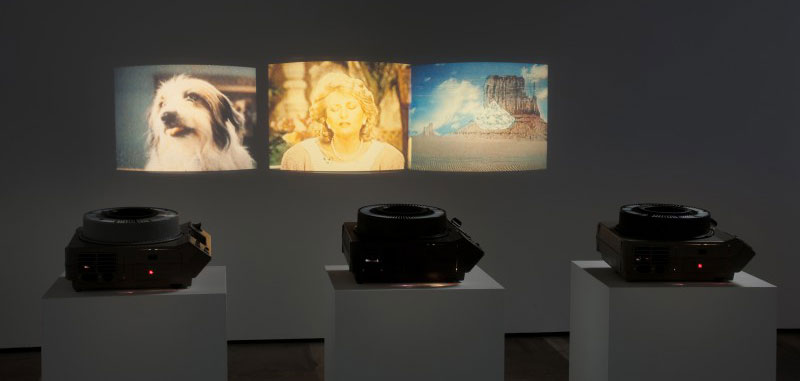Next story: Round 3, Week 2: Sara Elizabeth vs. Forever Green
A Cold Heinecken
by Jack Foran

Context unclear in Albright-Knox Exhibit
I was rather disappointed in the Heinecken exhibit at the Albright-Knox Art Gallery. I thought there was going to be beer.
Robert Heinecken, this turned out to be, the paraphotographer, as he describes himself. Meaning photographer basically—practitioner of the photographic arts—but for the most part without actually himself taking pictures. More making pictures, out of other people’s photos. He was a key figure in the Transformational Imagemaking manipulated and altered photography show lately at CEPA.
Maybe best known for his “Are You Rea” series of photoworks involving fragmented text and a muddle of images trading on sex and commercialism, to name two salient and persistent subject matters. Are you real? Are you ready? And for what? Some possible ways of interpreting/completing the title text fragment.
The Albright-Knox current installation consists of three sets of constantly changing slide show images—several hundred images in all—that the artist photographed directly from television screens in the 1980s. No narration, no sound except the clicking of the projectors changing slides.
With a bias toward several categories of imagery. Plentiful talking heads—though here they don’t get to say anything—including newscasters, celebrities, some celebrity newscasters. Several depictions of Barbara Walters. And shots of animals, sometimes straight, sometimes in funny get-ups, like the dog with a hat and glasses, or another sitting at a typewriter, or a pigeon on a little pigeon-size scooter. And people in odd postures and positions, for example, in exercise classes, yoga classes. Humor frequently by way of the juxtaposition of one image and another—a yoga lady on all fours on the floor, lifting one leg, like a dog in a similar posture, pissing. And television preachers, and fires, and explosions.
The title of the exhibit is Surrealism on TV. Some wall explanatory/background information text characterizes the installation on the whole as “humorous and critical commentary on the absurdity of our all-encompassing media culture.”
It’s partly that—critical commentary on the media culture—but you get the sense, something much more, and more important to the artist. And that the artist is going to keep it—whatever it is more—fuzzy, ambiguous. Like with the “Are You Rea” series. That one about real. This one about surreal.
More also because critical commentary in this case is just too easy. The “all-encompassing media culture” too easy a target. Commercial television too easy. And considering that to the subject of the supposed criticism—television—the artist is not being remotely fair. Taking things out of context. Taking stills of a broadcast stream. Talking heads without their talk. More than likely saying dumb things, but at least it should be necessary to hear them out before being critical. Juxtaposing shots of humans and shots of animals, making the animals look like people, the people look like animals. Pretty low comedy. The dog with the hat. The yoga lady on all fours.
Certainly television is surreal. But you don’t need odd juxtapositioning of images to make the point. Television is one grand enterprise of odd juxtapositioning. Death and laundry detergent. Mayhem and mawkish commentary. Probably more surreal when the talking heads talk than when they are silenced.
Whereas, in other examples of his own work, Heinecken constantly had recourse to surreal strategies and effects. Surreal was his bread and butter. His meat and potatoes. Hardly a critical category for him of reproach. More than anything, he embraces the “all-encompassing media culture.” Embraces and criticizes at the same time.
In his essay on Heinecken in conjunction with the Transformational Imagemaking exhibit, photography critic Robert Hirsch wrote about how Heinecken’s “reformulated combinations of images and text generated new meanings from the original material by dispensing with their original context.” That seems pretty much what he’s doing—the main thrust of what he’s doing—in the Surrealism on TV installation.
The Heinecken exhibit continues through May 31. It’s in the Gallery for New Media (in the northeast corner of the 1965 building).
blog comments powered by Disqus|
Issue Navigation> Issue Index > v14n10 (Week of Thursday, March 12) > A Cold Heinecken This Week's Issue • Artvoice Daily • Artvoice TV • Events Calendar • Classifieds |









 Current Issue
Current Issue